20 Free Things to Do in Barcelona for Every Traveler

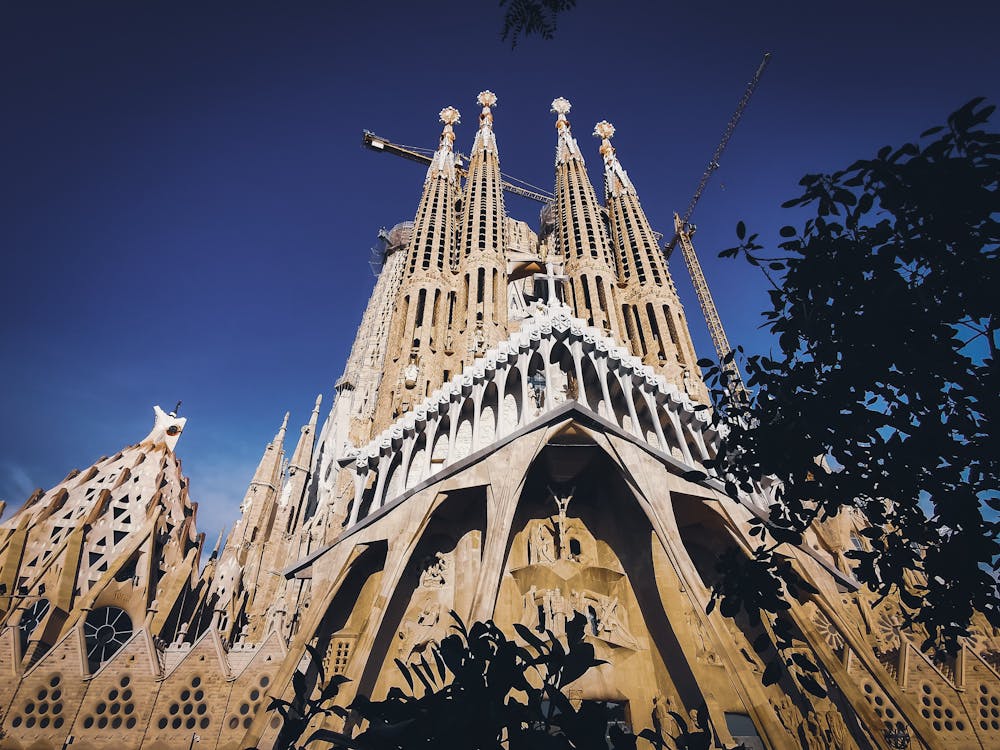
Barcelona is a dream destination, but the rising costs of tickets, tours, and food can make it feel out of reach for budget-conscious travelers. While its major attractions are world-famous, what about the quieter spots, the local secrets, and the hidden treasures? To make matters worse, popular attractions not only cost more but can often feel like tourist traps. If you've visited before, these overused activities might make a second trip feel even less special.
However, you don't have to spend a lot to have fun in Barcelona. There are so many free things to do - you can visit free museums, go for a walk in beautiful neighborhoods, go to a beach, hike, etc.
Cultural and Historical Sights
1. Roman Aqueduct and Necropolis

Barcelona’s roots date back to its days as the Roman city of Barcino, and remnants of this ancient past can still be found hidden in plain sight.
The Roman Aqueduct
At Plaça del Vuit de Març, the remains of an ancient Roman aqueduct can be found. It was discovered in the 1980s and is now beautifully integrated into the cityscape. Its arches stand gracefully between modern buildings.
The Roman Necropolis
A short walk away at Plaça de la Vila de Madrid is the necropolis, a Roman burial site uncovered in the 1950s. Tombstones and monuments are lined along an ancient road just a few meters below street level.
Why Visit?
Both the aqueduct and necropolis are free to explore and easily accessible. These spots are perfect for anyone looking to connect with Barcelona’s Roman history without the crowds of larger attractions.
Local tip: Casa de l’Ardiaca is located near the aqueduct. Its picturesque courtyard, rich in history, is another spot you can enjoy for free.
2. Monestir de Pedralbes
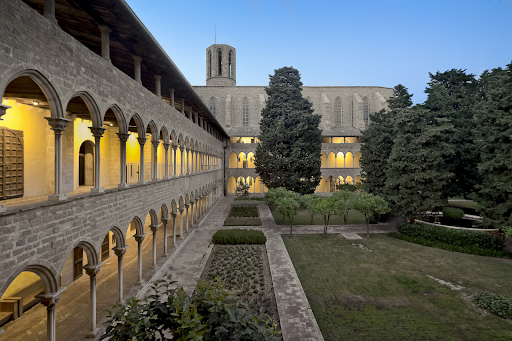
Monestir de Pedralbes is a hidden gem in Barcelona. It’s a peaceful retreat away from the city. This Gothic monastery, founded in 1327, reflects the city’s rich history and architectural heritage.
The monastery is surrounded by tranquil gardens and includes a stunning three-story cloister, considered one of the most beautiful in Europe. The graceful arches and serene courtyards create an atmosphere perfect for a quiet walk or moments of reflection. Inside, the chapterhouse, refectory, and dormitory reveal the daily routines of the nuns who once lived there.
What Can You See Inside?
Monestir de Pedralbes is home to an impressive collection of religious art and artifacts. The St. Michael's Chapel displays frescoes painted by Ferrer Bassa, showcasing exquisite 14th-century Gothic artistry. Everyday objects used by the nuns are also on display, giving insight into the simplicity and devotion of monastic life.
Free Admission
You can get a free admission on Sundays from 3 p.m. Plus, a free entry day for the whole day every first Sunday of the month.
Local tip: After your visit, walk through the Pedralbes neighborhood to enjoy its picturesque streets and lush greenery.
3. El Born Cultural Centre
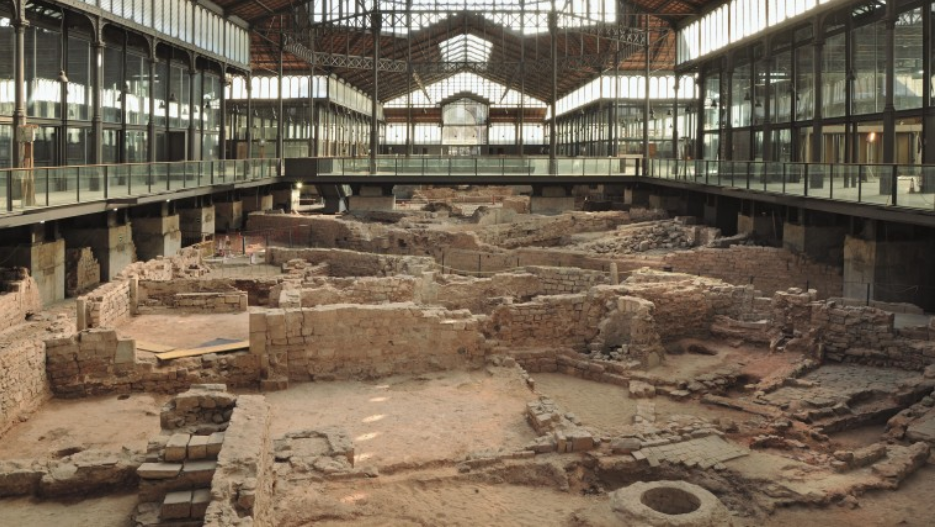
El Born Cultural Centre is a unique spot in the lively El Born neighborhood. This 19th-century market building has been transformed into a cultural space where you can learn about Barcelona’s past in an interesting way.
What’s Inside?
Inside, you’ll find ruins of a neighborhood destroyed in 1714 during the War of the Spanish Succession. These remains include streets, homes, and everyday items from over 300 years ago. Walking along the platforms above, you can imagine what life was like back then.
More to See and Do
The center also has exhibits and events that focus on Catalan history and culture. These change throughout the year, so there’s always something new to check out.
Free Entry with an Audio Guide
The access to the the archaeological site, exhibitions, and routes is free. The guided tour costs only €4, so it's still a budget-friendly option. Free audio guides are also available!
Local tip: After visiting, just walk around El Born to enjoy its cute shops, small art studios, and cozy cafes.
4. Recinte Modernista de Sant Pau
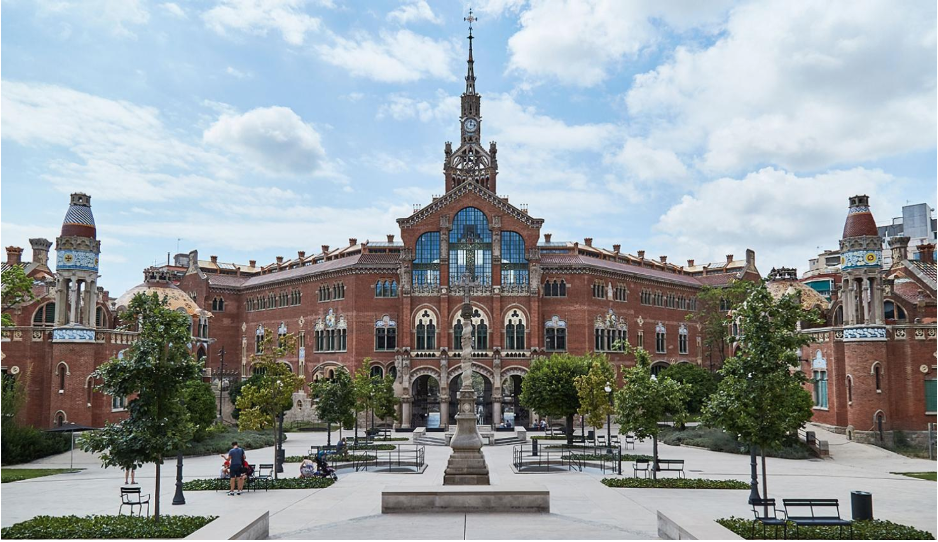
Recinte Modernista de Sant Pau is one of Barcelona’s most beautiful architectural treasures. It was designed by Lluís Domènech i Montaner, a key figure in Catalan Modernisme, and now stands as a UNESCO World Heritage Site. While many visitors flock to Gaudí’s creations, this site is equally breathtaking and far less crowded.
The complex includes several stunning pavilions surrounded by lush gardens. Intricate tile work, colorful mosaics, and grand domes beautifully show the distinctive style of Modernisme.
What to Expect for Free
The outdoor areas of Recinte Modernista de Sant Pau are open to the public without charge. Visitors can wander through the gardens and admire the exterior details of the buildings. The peaceful setting and beautiful architecture make it an ideal spot for a quiet escape or a photo session.
You can also book a guided tour or a skip-the-line ticket.
5. Gaudí's First Creation, Casa Vicens
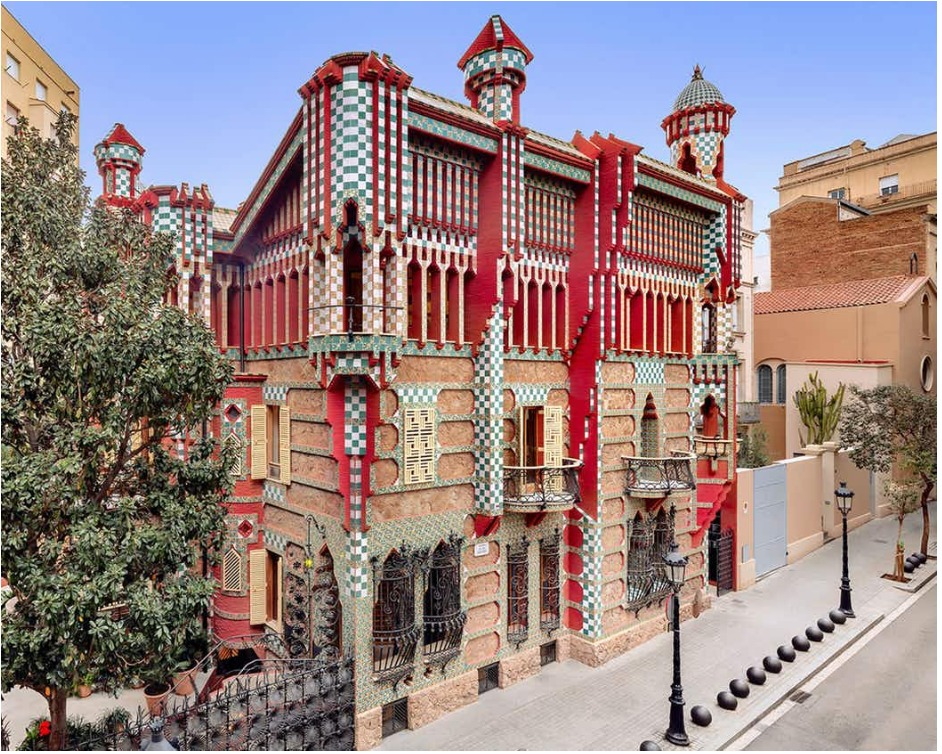
Casa Vicens is the first house designed by Antoni Gaudí. It was built between 1883 and 1885 and marked the start of his journey into Modernisme. It’s located in the Gràcia neighborhood and this colorful house is a bold example of Gaudí’s early creativity.
What's so Special?
The house stands out with its bright colors, ceramic tiles, and detailed ironwork. Gaudí was inspired by nature and Middle Eastern designs when creating this summer home for the Vicens family.
What to Expect for Free
The interior requires a ticket, but the façade is free to admire from the outside. If you love architecture, you'd love Gaudi's unique style!
Local tip: After seeing Casa Vicens, just continue walking on Gràcia’s charming streets. The area is full of small shops, cozy cafes, and quiet plazas.
Outdoor Activities
6. Hike to Bunkers del Carmel
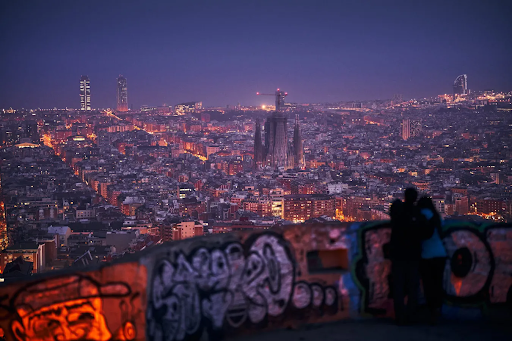
Bunkers del Carmel is one of the best places to enjoy a panoramic view of Barcelona. It is located on Turó de la Rovira. This historic site offers a 360-degree view of the city. A bonus - you can see landmarks like the Sagrada Família and the Mediterranean Sea from here.
A Bit of History
The bunkers were built during the Spanish Civil War as an anti-aircraft battery. Later, the site became a shantytown where many families lived. Today, it is a peaceful lookout point with remnants of its past still visible. It’s a place where you can enjoy the views and learn about Barcelona’s history.
What to Expect
Reaching the bunkers requires a bit of a climb. The hike takes you through quiet neighborhoods and scenic paths. Once at the top, you’ll find open platforms where you can relax, take photos, or have a picnic.
Local tip: Bring a snack or drink to enjoy while you’re there. Sunset is a popular time to visit, but mornings are quieter and more peaceful.
7. Take a Walk in Laberint d’Horta
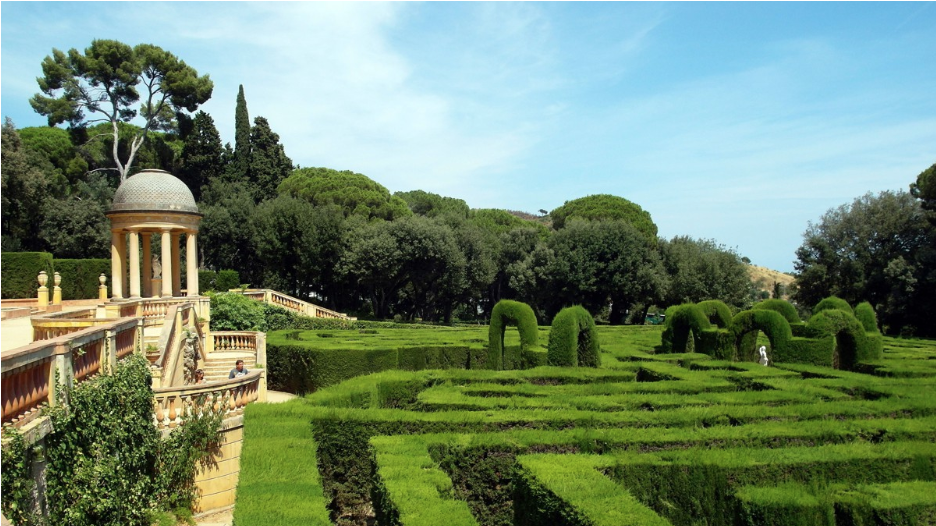
Laberint d’Horta is a peaceful park in the Horta-Guinardó district. It is the oldest garden in Barcelona and a hidden gem for those seeking a quiet escape.
A Maze
The park is most famous for its hedge maze made from cypress trees. It’s a fun place to wander through and find your way out. Beyond the maze, the park has beautiful neoclassical and romantic-style gardens, serene ponds, and sculptures inspired by Greek mythology.
Free Days and the Price
The park is free on Wednesdays and Sundays. Entry costs 2.23 €, which is way cheaper than other popular attractions. It's less known to tourists, so if you want a unique experience, this is perfect! Especially, for solo travelers or couples.
8. Montjuïc’s Mirador del Migdia
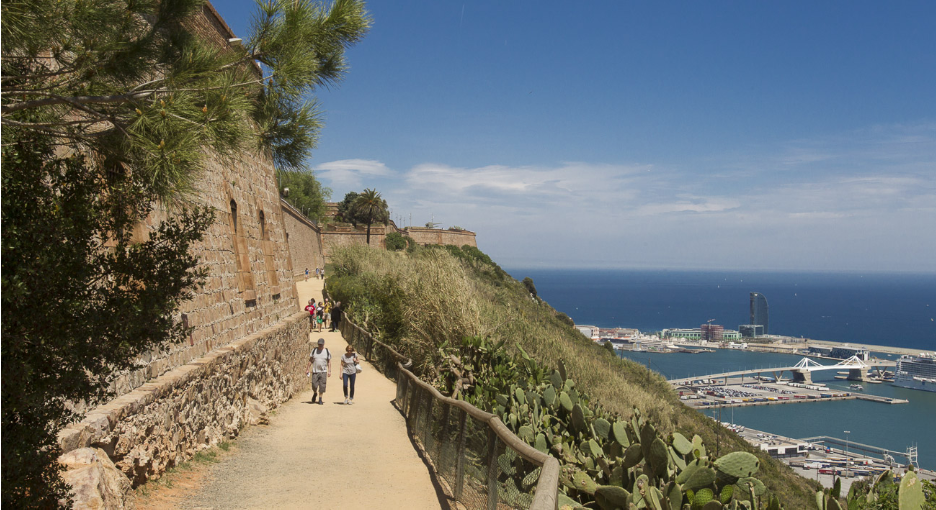
Montjuïc’s Mirador del Migdia is a quiet viewpoint with stunning views of the city and the sea. It is located on Montjuïc Hill. So, it's another one of the peaceful escapes.
The viewpoint faces the southern part of Barcelona, giving a panoramic view of the coastline and the surrounding area. Unlike other popular viewpoints, it remains less crowded, even during peak tourist seasons.
Why Visit?
Firstly, Mirador del Migdia is free. This spot is perfect for relaxing after a walk around Montjuïc. There are benches where you can sit and take in the scenery. Nearby, a small cafe operates during warmer months. It’s also a great place to enjoy the sunset in a quiet atmosphere.
Local tip: Pack a picnic or grab a drink from the cafe, especially if you visit in the evening. The surrounding area also has trails for a peaceful walk.
9. Jardins de Laribal
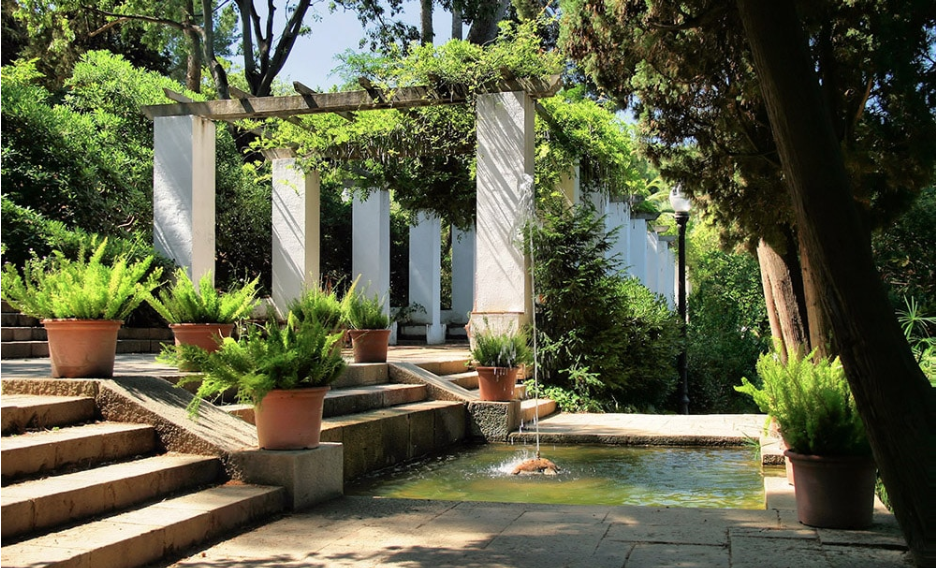
Jardins de Laribal is a peaceful garden located on the slopes of Montjuïc Hill. It is one of Barcelona’s most charming green spaces, filled with fountains, terraces, and shady paths that create a serene escape.
The garden was inspired by Andalusian design, with elements like cascading water features and tiled benches. Its elegant layout includes staircases, flowerbeds, and small pavilions. You’ll also find hidden corners that are perfect for quiet reflection.
Why Visit?
Jardins de Laribal is free to enter and is a great spot for nature lovers, photographers, or anyone looking for a peaceful retreat. Plus, this garden is less crowded than other parts of Montjuïc.
Local tip: Visit in the morning or late afternoon to enjoy cooler temperatures and softer light. If you’re planning on visiting Montjuïc, the Montjuïc museum and the Joan Miró Foundation this garden is a perfect stop along the way.
10. Sunset at Tibidabo
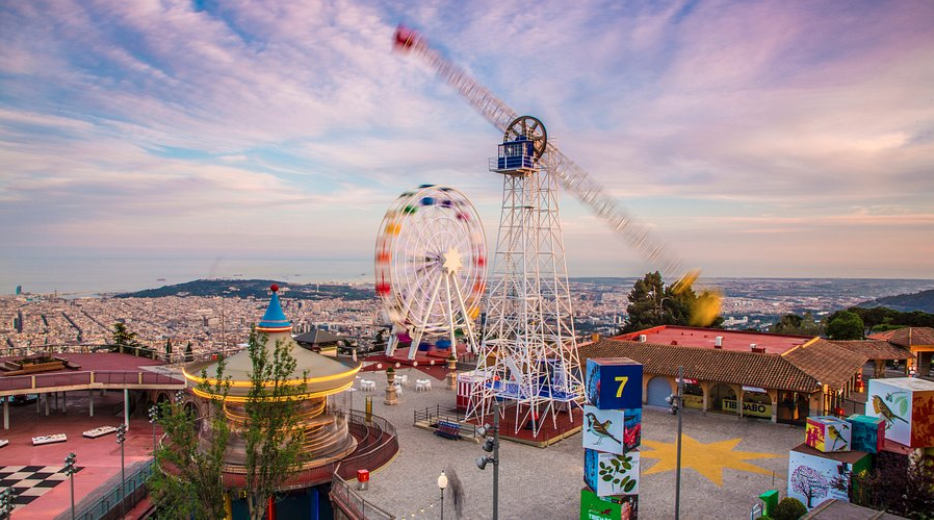
Tibidabo is Barcelona’s highest point and is the perfect spot to watch the sun set over the city. You can see the panoramic views of the entire skyline, the Mediterranean Sea, and the surrounding mountains.
Here, you can visit the Church of the Sacred Heart and a vintage amusement park. While the park requires a ticket, the open areas and viewpoints are free to explore. Looking over the sunset in this beautiful city is unforgettable.
How to Get Here?
You can either hike, take a bus ride or use funicular, which costs around 12.00€ (two-way ticket).
Local tip: Bring a jacket, as it can get windy at the top, especially in the evening. Consider packing a small picnic to enjoy while you take in the view.
Feel Like a Local
11. Shop Like a Local at Santa Caterina Market
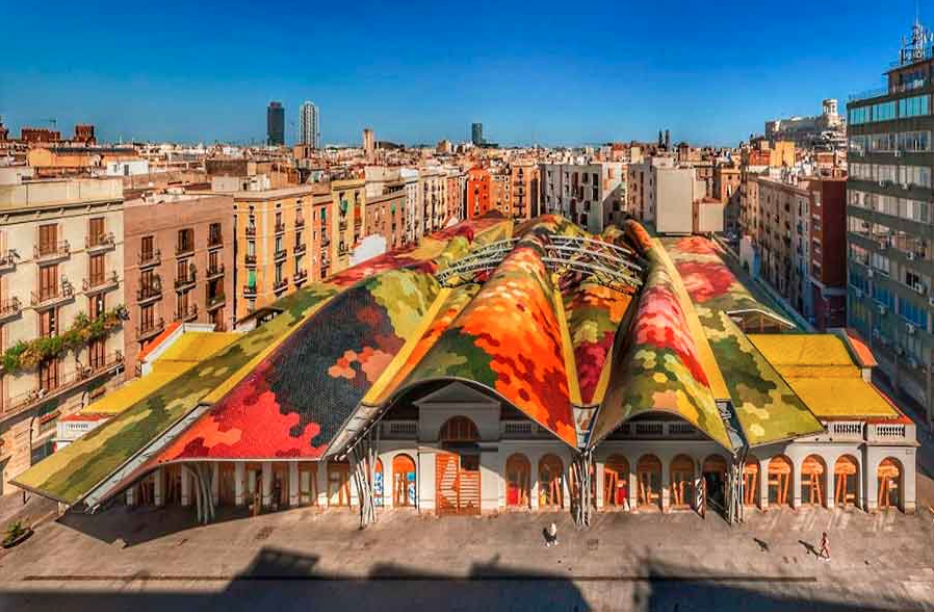
Santa Caterina Market is a lively spot in Barcelona that’s perfect for getting a taste of local life. It's located near the Gothic Quarter and is less crowded than the famous La Boqueria but just as colorful and authentic.
The market’s wavy, multicolored roof is hard to miss and adds to its charm. Inside, you’ll find stalls full of fresh produce, seafood, meats, and cheeses. Unlike some of the more touristy markets, Santa Caterina caters primarily to locals. So, it's a great place to experience everyday Barcelona.
Remember to be respectfu and don’t disturb Barcelonians every day life.
Local tip: Visit in the morning when the market is at its busiest and freshest. Don’t leave without trying a snack or two—many vendors sell ready-to-eat items that are both delicious and affordable.
12. El Born’s Art Studios
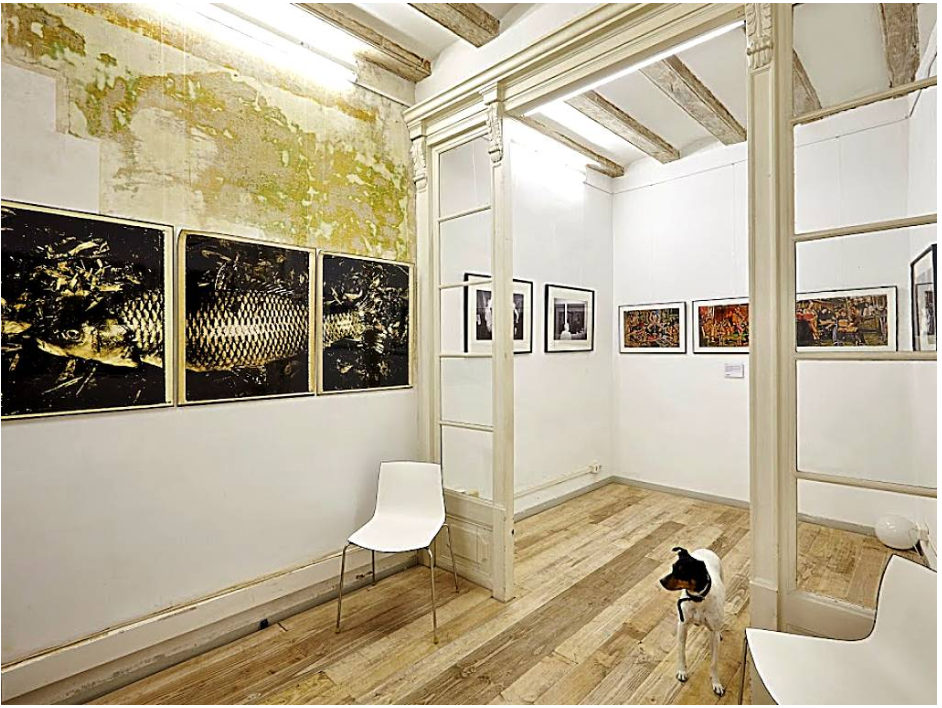
El Born is one of Barcelona’s most creative neighborhoods, known for its narrow streets, historic charm, and beautiful art scene. Art studios and galleries are scattered throughout this area where local artists display their works
Many of the studios are tucked away on quiet side streets. Here you'll have a chance to find unique paintings, sculptures, and handmade crafts. These spaces often double as working studios, so you might even catch an artist at work. The atmosphere here is relaxed and inviting.
Local tip: Focus on streets like Carrer dels Mirallers and Carrer de la Princesa for a concentration of art spaces.
13. Join Sardana Dancing at Pla de la Seu
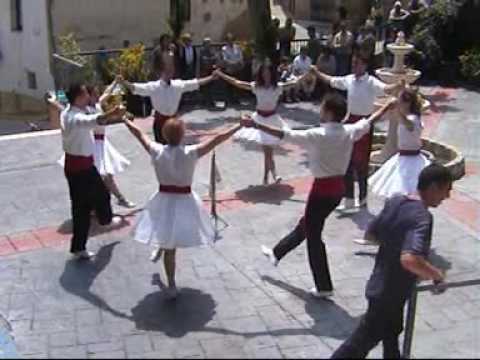
Sardana dancing is a traditional Catalan folk dance that symbolizes unity and community. Every weekend, locals gather at Pla de la Seu, in front of Barcelona’s Cathedral, to perform this graceful dance. It’s a wonderful way to experience the region’s culture and traditions up close.
How Does the Dance Work?
Participants hold hands to form a circle and follow a series of precise, rhythmic steps to the music of a live cobla, a Catalan wind and string band. The dance is open to everyone, and you’ll often see a mix of experienced dancers and newcomers joining in.
You don’t need to know the steps to enjoy the event—it’s just as rewarding to watch the dancers and soak up the lively atmosphere.
Price
This event is free. Arrive early to secure a good spot to watch or join the dance.
14. Plaça d’Osca’s Local Bars

Plaça d’Osca is a lively square in the Sants neighborhood. It’s a favorite spot for locals, with a relaxed vibe and cozy bars. The square comes alive in the evenings when friends and families gather to share drinks, tapas, and good company.
The bars around the square serve a mix of traditional Catalan dishes, creative tapas, and refreshing drinks. The outdoor terraces are perfect for soaking up the atmosphere while enjoying a glass of vermouth or a locally brewed beer. Unlike the more touristy areas, Plaça d’Osca has a distinctly local feel that makes it a hidden gem.
Prices
Of course, it's free to visit, and even if you decide to enjoy a drink or snack, it’s very affordable compared to the city center.
Local tip: Try a vermouth paired with a tapa like patatas bravas or croquetas.
Unique Free Events and Activities
15. Attend a Summer Concert with Musica als Parcs
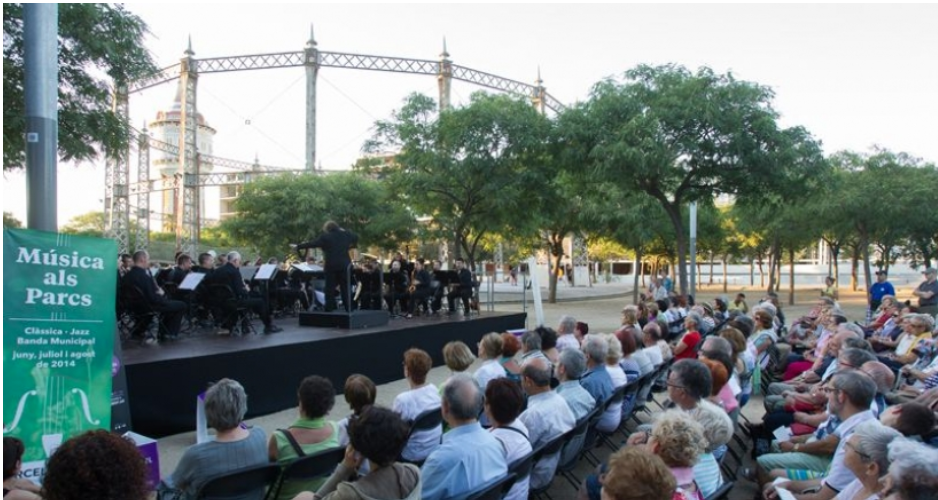
Musica als Parcs is a summer concert series that brings live music to Barcelona’s parks. You can listen to talented local musicians - enjoy jazz, classical, or traditional Catalan music under the open sky.
The concerts take place in some of the city’s most scenic parks, such as Parc de la Ciutadella and Parc de Joan Miró.
Price
The events are free, and no tickets are required. Just bring a blanket or a comfortable chair, and find a spot on the grass. The concerts usually start around sunset, adding to the charm of the experience.
Arrive early to get a good spot, especially for popular performances!
16. Graffiti Walls in Poblenou
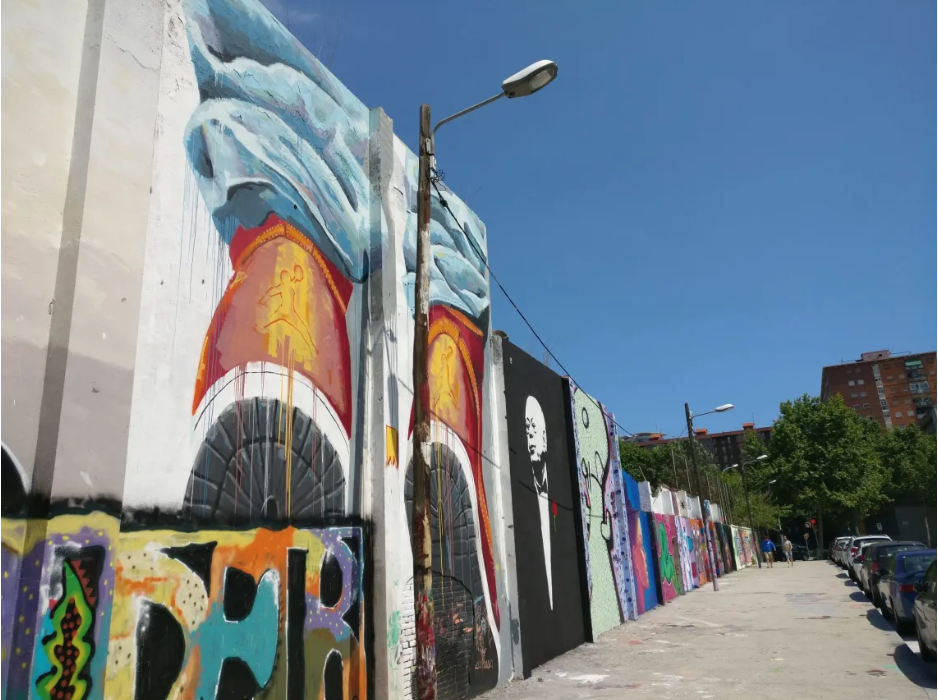
Poblenou is Barcelona’s hub for street art. These murals and graffiti make the neighborhood an open-air gallery. The area’s industrial past has left behind large walls and abandoned factories that serve as the perfect canvas for urban artists.
What to Expect
The artwork changes regularly, so every visit feels fresh and new. Explore the area on foot or by bike. The atmosphere here is lively yet relaxed, with fewer crowds than in central Barcelona.
17. Free Cinema Lliure Screenings on the Beach
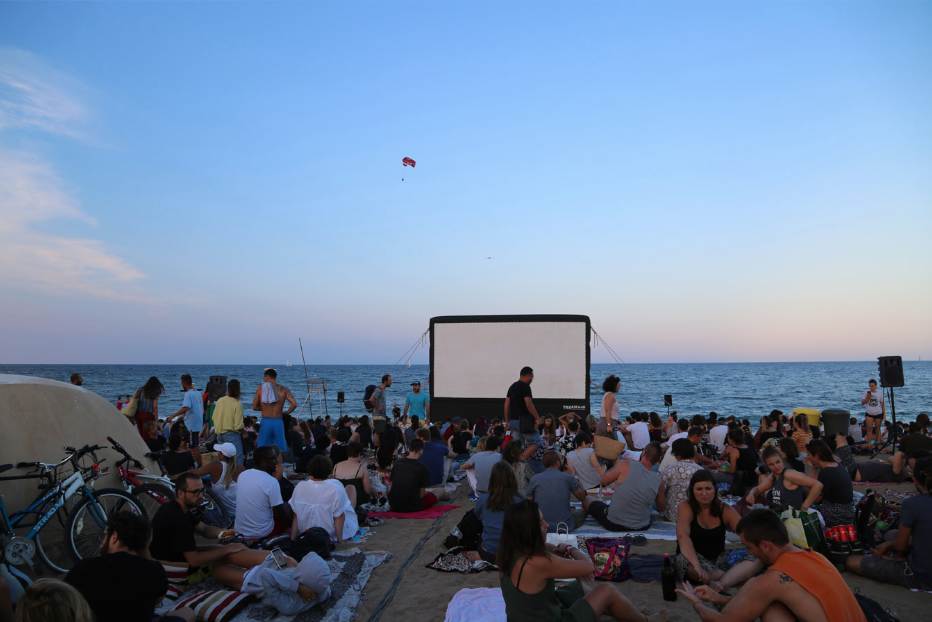
Cinema Lliure is an outdoor film series that screens independent films, documentaries, and shorts right by the sea. It’s a unique way to enjoy culture and entertainment under the stars.
The screenings take place at several beaches, including Barceloneta, where you can relax on the sand with the sound of waves in the background. Films are shown in their original language, with subtitles.
What to Expect
The event is completely free, and you don’t need tickets. Just bring a towel, beach chair, or blanket to sit on. Arrive early to grab a good spot, as these screenings are popular with both locals and visitors.
18. Picnic at Parc de l’Estació del Nord
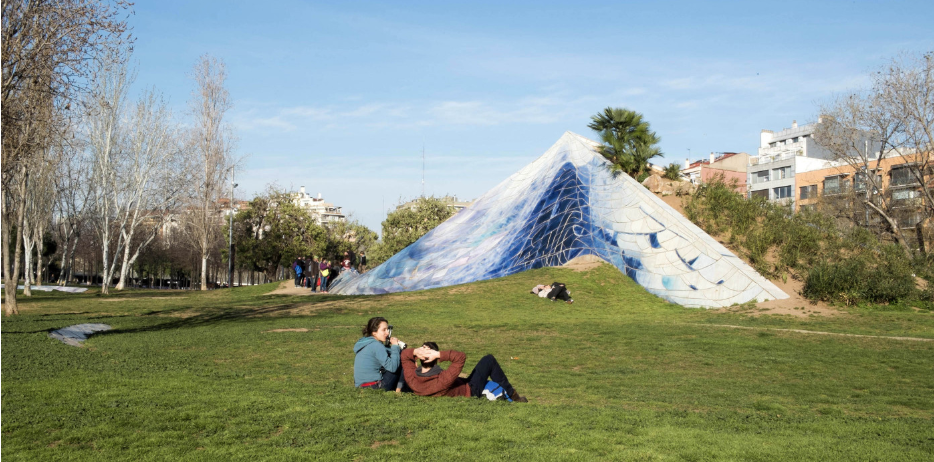
19. Join a Free Walking Tour
A free walking tour is one of the best ways to discover Barcelona’s history, architecture, and hidden gems. It's led by knowledgeable guides. They will take you through the city’s iconic neighborhoods while sharing fascinating stories and local insights.
What to Expect
Most free walking tours cover areas like the Gothic Quarter, El Born, or the world of Antoni Gaudí. You’ll visit historic streets, hear stories of the city’s past, and see famous landmarks up close. Tours typically last 2–3 hours.
These guides work on a “pay-what-you-wish” basis, so you can decide how much to tip at the end. Remember to book your place in advance!
20. Visit Free Museums
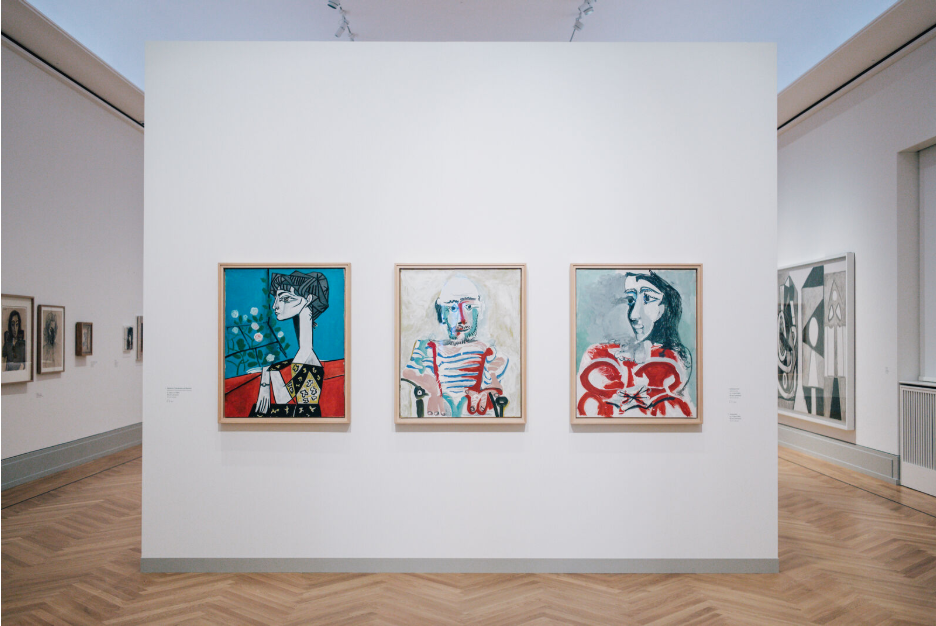
Barcelona has many amazing museums, and some are free to visit all year. Others have certain days or times when you can enter without paying. So, you can still enjoy art, history, and culture on a budget.
Museums That Are Always Free
Some museums are free all the time. The La Virreina Centre de la Imatge on La Rambla has changing exhibitions of photography and visual art. The Museu Frederic Marès, with its collection of sculptures and historical items, also has free access during certain hours.
Free Days and Times
Many public museums are free on specific days. The Picasso Museum and the Museu Nacional d’Art de Catalunya (MNAC) are free on the first Sunday of the month or after 3:00 pm on Sundays. The Barcelona History Museum (MUHBA) also allows free visits during these times.
Local tip: Free entry times can change. Check the museum websites and plan ahead.
Conclusion
Barcelona is full of amazing things to do, even if you’re on a budget. There are so many things to do that won't cost you a cent! Some more activities that weren't mentioned:
Take a walk along the beach, especially at Barceloneta or Bogatell.
Visit free public spaces like Plaça d’Espanya or Arc de Triomf.
Check out local festivals or street performances, which happen often in Barcelona.
Relax at public libraries, many of which are in beautiful historic buildings.
Get a Barcelona Travel Card, like the TMB Hola BCN card, for unlimited public transport. It’s cheaper than buying single tickets and makes getting around the city easy. Take advantage of discounts if you’re a student, senior, or have a Barcelona library card.
Skip restaurants on La Rambla or other tourist-heavy areas—they are often overpriced and less authentic. Look for menus del día (set lunch menus) at local restaurants, which are affordable and filling. Avoid tourist traps!
If you want more tips, read our article about visiting Barcelona on a budget.



